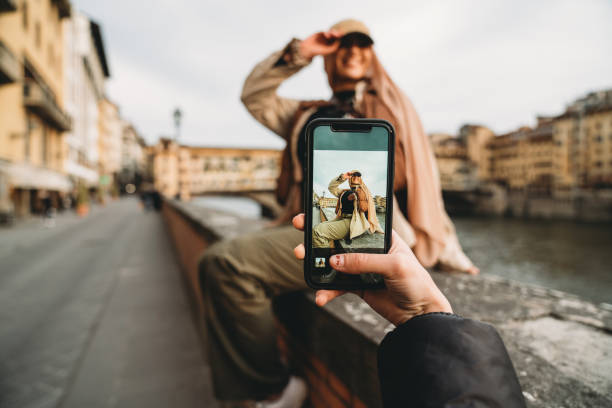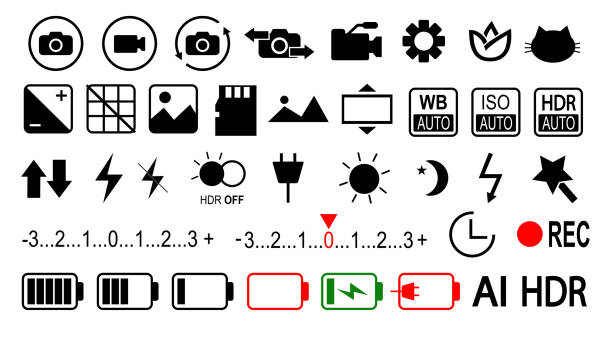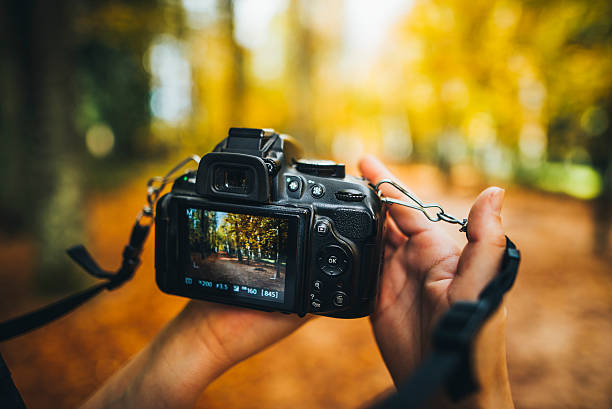How To Take High-Quality Pictures Using your Mobile Phone
DO YOU LOVE HIGH-QUALITY EYE-CATCHING IMAGES?
ARE YOU A NEWBIE IN THE FIELD OF PHOTOGRAPHY?
WOULD YOU LOVE TO GET BETTER AT CAPTURING TIMELESS FOR BOTH PERSONAL AND PROFESSIONAL USE?
DO YOU HAVE A PROFESSIONAL CAMERA OR A MOBILE DEVICE WITH A GOOD CAMERA RESOLUTION?

If the answer to the above-stated questions is yes, then this blog post is for you. Sit back, grab a drink let's get you started on this insightful edition of the INSPIRED POET'S CHRONICLE.
PHOTOGRAPHY IN THE 21st Century
Photography is the art and practice of capturing images using light-sensitive materials or digital sensors. It encompasses various techniques, styles, and purposes, ranging from artistic expression to documentary storytelling, commercial advertising, and scientific research.
Seated dominantly at the center of this art is the camera which is used to to record visual images of people, objects, landscapes, events, or concepts. Photography is not only a creative pursuit but also a powerful means of communication and expression.
Photographs can evoke emotions, convey messages, document history, and inspire change. Whether capturing the beauty of nature, documenting social issues, or showcasing personal experiences, photography serves as a powerful medium for storytelling and connecting people across cultures and generations. IT KEEPS THE PAST FOREVER AND ALWAYS PRESENT

Photography has evolved significantly since its inception in the early 19th century, with advancements in technology leading to the development of various types of cameras, lenses, and equipment. Aristotle described the principles of the camera obscura, which entails projecting an image through a small hole and producing an inverted image.
Ever since this concept was established famous contributors in the field of photography like George Eastman who created the roll of film, made it possible to shoot multiple pictures one after the other, and Thomas Edison pushed the walls of photography and the camera further.
Colored photos came into the photography scene in 1936 as Kodak released Kodachrome, a film with multiple layers for developing in color. Let me not bore you with too many details and historical facts, but having a good camera doesn't mean you'd automatically have a good picture output.

In a way, the CAMERA IS AN ARTIST’S TOOL, JUST LIKE A PAINTER’S BRUSH, you'll need a thorough knowledge of your tool and how to manipulate it to produce the desired image.
HOW TO CAPTURE HIGH-QUALITY PICTURES USING YOUR PHONE
To start with, to get good picture quality, it's healthy for the artist to have in handy the following tips:
1. KEEP IT CLEAN: Keep your camera lens or smartphone camera lens clean and free of smudges, dust, or fingerprints. Use a microfiber cloth or lens cleaning pen to gently wipe away any debris before taking photos. A clean lens ensures clear and sharp images without any distortion or artifacts. IT'S INCREDIBLE TO KNOW THAT PHOTOGRAPHY and HIGH-QUALITY IMAGES IMMORTALISES FLEETING MEMORIES, KEEPING THE PAST EVER PRESENT.

2. Pay attention to lighting conditions. Lighting plays a crucial role in photography. Whenever possible, utilize natural light by shooting outdoors or positioning your subject near a window. Avoid harsh overhead lighting or direct sunlight, as it can create harsh shadows and overexposure. Alternatively, consider investing in softbox lights or diffusers for indoor photography.
3. TAKE YOUR TIME to adjust the FOCUS and COMPOSITION of your shots before pressing the shutter button. Use the autofocus feature on your camera or smartphone to ensure that your subject is sharp and well-defined. Experiment with different angles, perspectives, and framing techniques to create visually interesting compositions. Recent technologies for most mobile phones now allow you to tap on the screen to set the focus point. Use this feature to ensure that your subject is in sharp focus.

3. TAKE YOUR TIME to adjust the FOCUS and COMPOSITION of your shots before pressing the shutter button. Use the autofocus feature on your camera or smartphone to ensure that your subject is sharp and well-defined. Experiment with different angles, perspectives, and framing techniques to create visually interesting compositions. Recent technologies for most mobile phones now allow you to tap on the screen to set the focus point. Use this feature to ensure that your subject is in sharp focus.
4. Use HDR mode: High Dynamic Range (HDR) mode helps capture a wider range of light and dark areas in a photo. It’s especially useful in high-contrast scenes, such as landscapes with bright skies and dark shadows.

5. STABILIZE YOUR CAMERA: To prevent blurry photos, use a tripod or stabilize your camera against a solid surface when taking pictures. This helps minimize camera shake and ensures sharper images, especially in low-light conditions or when using slower shutter speeds.
6. Experiment with angles and perspectives: Don’t be afraid to try different angles and perspectives to add visual interest to your photos. Get down low, shoot from above, or try unique angles to create a fresh look.
7. OPTIMIZE CAMERA SETTINGS: Familiarize yourself with your camera's settings and features to optimize image quality. Features like portrait mode, night mode, or panorama can auto-adjust settings such as ISO, aperture, and shutter speed based on the lighting conditions and desired effect.

8. MASTER THE ART OF EDITING: Editing software or apps can help enhance and refine your photos after they've been taken. Experiment with basic editing tools such as brightness, contrast, saturation, applying filters, and cropping to fine-tune your images and achieve the desired look. However, avoid over-editing, as it can detract from the natural beauty of your photos.
9. GET CREATIVE, PRACTICE, AND EXPERIMENT: Like any skill, photography requires practice and experimentation to improve. Take the time to explore different techniques, subjects, and styles to develop your unique photographic voice. Don't be afraid to make mistakes or try new things – it's all part of the learning process.

10. Take courses that closely align with developing craft.
So the next time you wield your camera don't fret, connect your heart and hands with the tips shared in this blog post and watch your hands capture awesome images that tell our stories from generation to generations.
SHOOT your SHOT!
SHOOT your SHOT!

